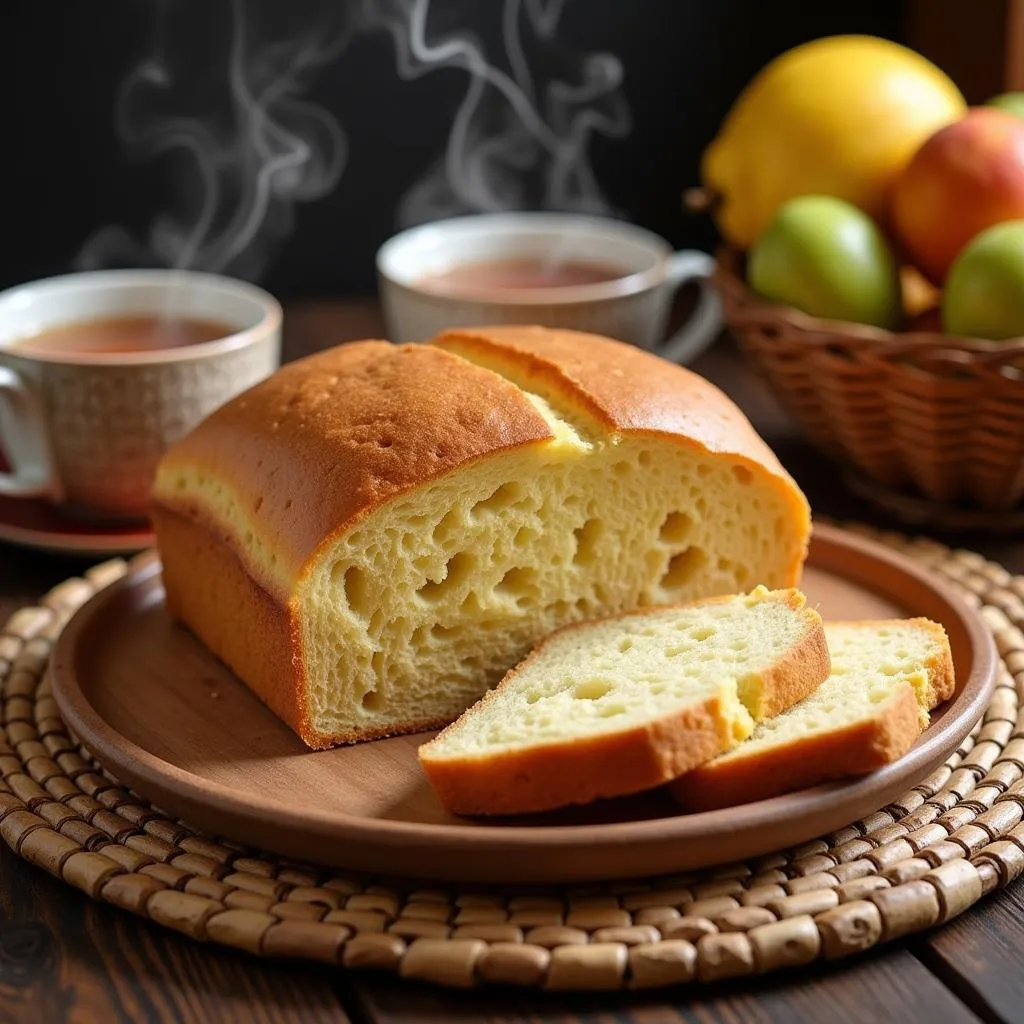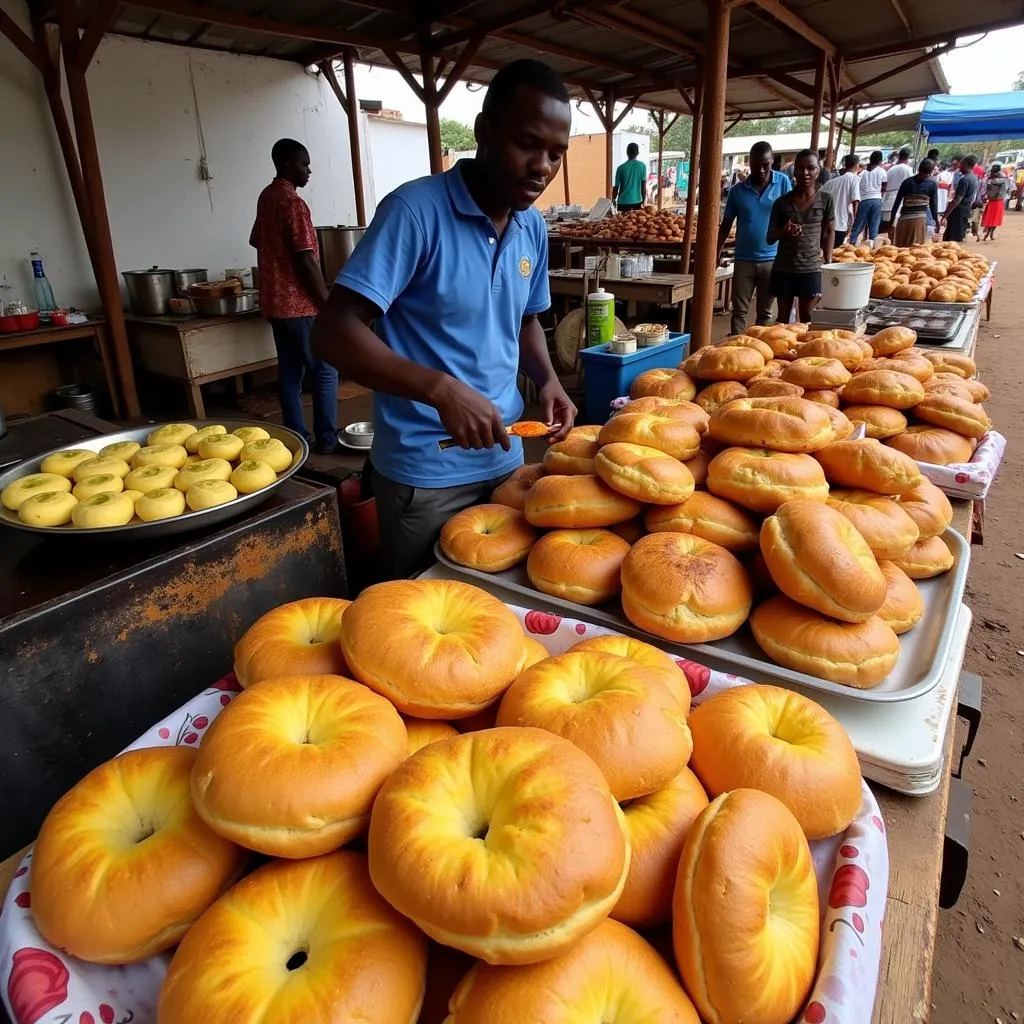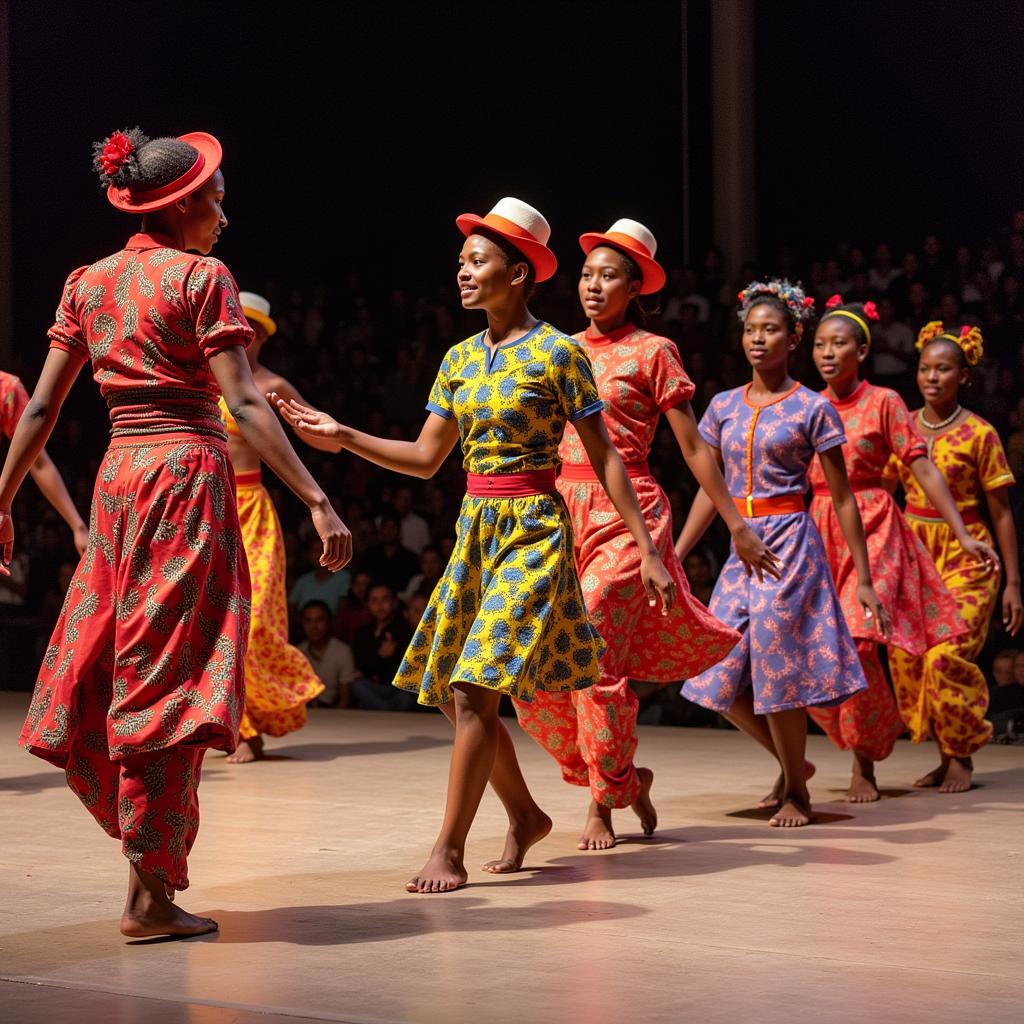Discovering the Delight of African Butter Bread
African Butter Bread, a staple in many cultures across the continent, is more than just a simple loaf. It embodies tradition, community, and the pure joy of sharing a delicious meal. From the bustling marketplaces of East Africa to the serene villages of West Africa, this bread holds a special place in the hearts and stomachs of many.
A Taste of Diversity: Exploring Regional Variations
While the core concept of butter bread remains consistent, each region of Africa has its own unique take on this beloved food.
In East Africa, particularly in countries like Kenya and Tanzania, you’ll find sweet, enriched bread often flavored with coconut milk and cardamom. This version, known as “mkate wa siagi” in Swahili, is a common breakfast treat, often enjoyed with a cup of spiced tea.
 East African Butter Bread
East African Butter Bread
Moving to West Africa, the flavors and textures take on a different character. In Ghana, “bofrot”, a type of fried dough, is a popular street food often compared to doughnuts. These golden-brown balls of dough are crispy on the outside and delightfully chewy on the inside, making them an irresistible treat.
Further down the coast, in Nigeria, “agege bread” reigns supreme. This bread, named after a district in Lagos, is known for its soft, airy texture and slightly sweet flavor. It’s incredibly versatile and can be enjoyed with a variety of fillings, from bean paste to fried eggs.
 West African Butter Bread Variations
West African Butter Bread Variations
More Than Just Bread: The Cultural Significance
African butter bread isn’t just about sustenance; it’s deeply intertwined with the social fabric of communities. In many cultures, bread plays a central role in celebrations, ceremonies, and everyday life.
Across the continent, bread is often shared as a gesture of hospitality and friendship. Offering a guest a piece of freshly baked bread is a way of welcoming them into your home and sharing a part of your culture.
“Bread, for many African communities, is more than just food. It’s a symbol of life, a representation of community, and a testament to the generations-old traditions passed down through families,” explains Abena Osei, a Ghanaian food historian.
 African Family Sharing Butter Bread
African Family Sharing Butter Bread
Baking with Love: A Glimpse into Traditional Methods
The process of making African butter bread is often a labor of love, passed down through generations. While modern bakeries have streamlined the process, many still rely on traditional methods that impart unique flavors and textures.
For instance, in some rural communities, wood-fired ovens are still used, infusing the bread with a distinct smoky aroma. The kneading process, often done by hand, is seen as an art form, with experienced bakers using their intuition and skill to achieve the perfect texture.
Beyond the Bite: Exploring African Cuisine
African butter bread serves as a delicious gateway to the diverse and flavorful world of African cuisine. If you’re eager to delve deeper into the continent’s culinary treasures, be sure to check out these articles:
- African Lamb Stew: Discover the rich flavors and aromas of this hearty stew.
- African Chapati Recipe: Learn the art of making these soft, layered flatbreads.
- African Cookie Recipes: Indulge your sweet tooth with these delectable cookie recipes.
A Taste of Africa Awaits
African butter bread, in all its regional variations, offers a glimpse into the heart of African culture. From the simple act of sharing a meal to the intricate traditions behind its creation, this bread tells a story of community, resilience, and the pure joy of good food. So next time you have the opportunity, be sure to savor a bite of African butter bread and experience the magic for yourself.
FAQ
1. What is the difference between East African and West African butter bread?
East African butter bread tends to be sweeter and often incorporates coconut milk and cardamom. In contrast, West African variations, like bofrot and agege bread, can be both sweet and savory, with diverse textures and flavors.
2. Is African butter bread difficult to make at home?
While some traditional methods can be time-consuming, there are many simplified recipes available that allow you to enjoy homemade African butter bread with ease.
3. What are some common accompaniments for African butter bread?
Depending on the region and type of bread, common accompaniments include spiced tea, bean paste, fried eggs, stews, and soups.
4. Where can I find authentic African butter bread?
You can often find African butter bread at local African grocery stores, restaurants, or bakeries specializing in African cuisine.
5. Can I substitute ingredients in African butter bread recipes?
While some substitutions are possible, it’s important to note that they might alter the flavor and texture of the final product.
Need Help?
For any assistance or inquiries, please contact us:
Phone: +255768904061
Email: kaka.mag@gmail.com
Address: Mbarali DC Mawindi, Kangaga, Tanzania.
Our dedicated customer support team is available 24/7 to assist you.
Explore more about African cuisine and culture on our website! You might also enjoy our articles on traditional South African food and African dough kneading machine booklet recipes.


